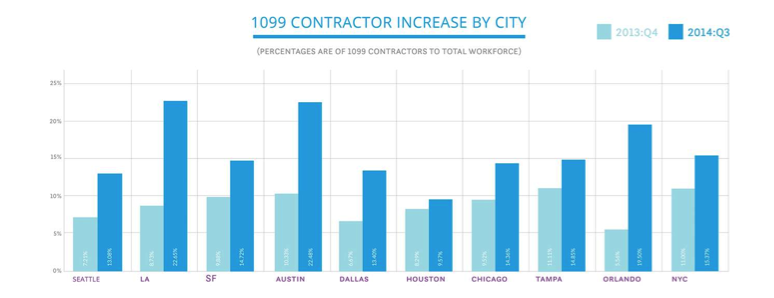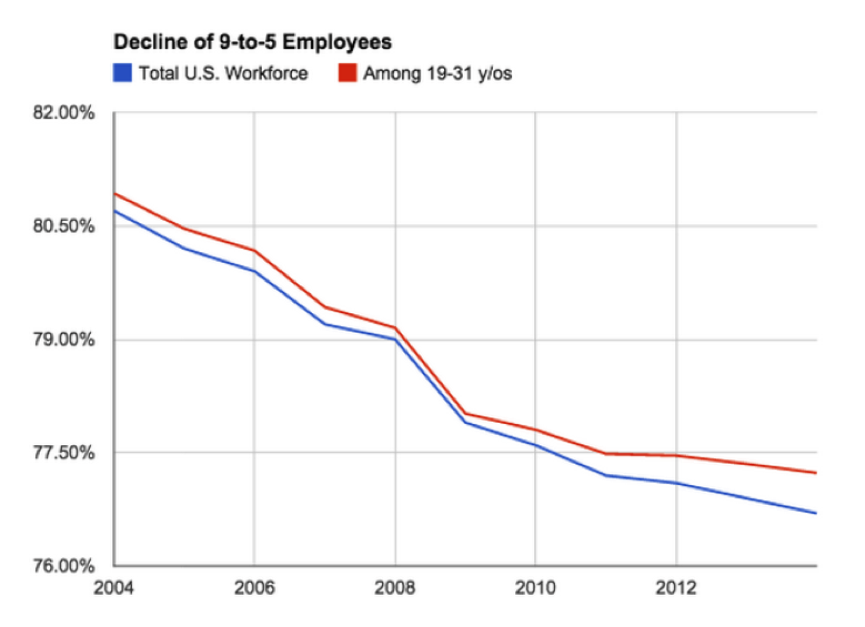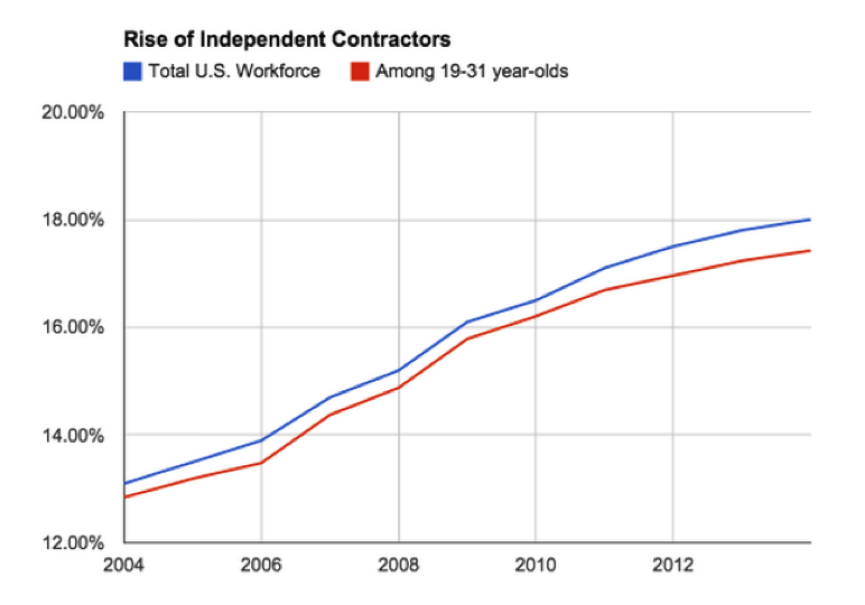By Jared Dillian
I just got done grading the final exams for my class (took me 12 hours). It’s 100 short answer questions and two essays. One of the essay questions is about the Volcker Rule. “Paul Volcker, former Federal Reserve chairman, as part of the rulemaking process for Dodd-Frank, included a provision prohibiting proprietary trading by banks, known as the Volcker Rule. Do you agree or not agree with the Volcker Rule? Explain.”
The funny thing about asking someone what they think of a law is, if you leave the question open ended and you don’t really describe what the law does, the response is generally favorable. Out of a class of 20 students, only two or three opposed the Volcker Rule. Most of them were in favor of it, as they were in favor of Glass-Steagall when I asked them to write a paper on that.
Seems pretty straightforward. If you have these banks that you call “systemically important,” such that they could go out of business and get rescued by taxpayers, then you don’t really want them taking risks with their own capital, right?
I mean, look how this worked out in the past.
Milton Friedman once said that laws should be judged by their results rather than their intentions. Liquidity has disappeared, and it is directly attributable to the Volcker Rule. If you hear someone try to make an argument that it’s not, that person is probably a journalist or a professor with no first hand knowledge of the situation.
I remember when the Volcker Rule first passed, years ago, someone senior in the equity derivatives market asked me, “Do you really think they will have regulators going through your trades, one by one, line by line, asking you if it was your intent to make money?”
“That seems very unlikely,” I told him.....But that is what we got.
In addition to confiscating cell phones and monitoring phone conversations, chats, and emails, the vast army of compliance officers at investment banks really will go through a trader’s blotter line by line and determine if each trade was a bona fide hedging transaction or if he was trading for his own account. In single stocks, this is pretty straightforward—either you were buying GE for a client or you were buying it for yourself. But in derivatives, it’s not. If you get hit on the GE Jan 30 calls, you’re not going to be able to turn around and sell them—you have to sell something else.
For example, if you’re long too much vega, you may want to sell some short-dated stuff against it, putting on a term structure trade. Is that a hedge, or prop trading? It’s impossible to make that distinction. But the compliance guys try. The interpretation varies. In equity derivatives, traders generally get the benefit of the doubt. In credit, they don’t. You can’t sell bond B to hedge bond A. You literally have to sit there and try to sell bond A. This is why the bond market is such a mess, which we have talked about in this space before.
Of course, none of this gets us any closer to preventing an investment bank from blowing up, because the guy trading 500 call options on GE was never going to blow up the bank in the first place. On the other hand, the Volcker Rule never would have prevented Jon Corzine from blowing up MF Global with European sovereign bonds. If a CEO really wants to do something like that, is some compliance dork really going to stop him? To say that this regulation is a catastrophic failure would be an understatement. Liquidity has disappeared, with no discernible benefit. I’m a middlebrow market commentator, and I’m not supposed to say things like “This is dumb,” but this is really dumb. It doesn’t take an Austrian economist to figure out the unintended consequences.
In the old days (10 years ago), banks were the big liquidity providers. Let’s look at this a different way: do we want banks to continue to be liquidity providers, yes/no? Banks were not always liquidity providers. In the ‘90s, in equity options, it was the physical trading floors where all the risk was handled. Stocks, too. But the bond market has always been an upstairs phenomenon.
If banks aren’t going to be liquidity providers, then we need non bank entities to provide liquidity, and we need to encourage it. Some large hedge funds and some second tier (i.e., not systemically important) broker dealers are starting to do this. But it’s not enough.
The goal was to take a bank and turn it from a risk taking institution to a toll taking institution, where everything is traded on an agency basis, with a commission applied. The FX markets, which were once all risk, are starting to look like this. In equities, traders don’t do much aside from maintain relationships and plunk orders into auto trader, where they are preyed upon by the algorithms.
This is unsustainable, because how can you hire all these smart people from fancy schools and pay them all this money just to push a button—while all their communications are monitored? Nobody is happy with the current state of affairs. 10 years ago, you could sell 250,000 shares on the wire. Or $25 million of bonds.
I have two radical solutions. Here they are:
Then decimalization happened. The preferential treatment lasted about another month, then they started charging us a penny a share. Market making went from being a profitable business to an unprofitable one.
Guess what—if market making is profitable, a lot of people will want to do it, and you will have a lot of liquidity. If market making sucks, nobody will want to do it, and you will have no liquidity.
Did the retail investor benefit? Maybe. Now he could go into his E-Trade account and execute something for a penny instead of 1/16. But if he was a shareholder in a mutual fund, the mutual fund portfolio manager now had to drop 250,000 shares into auto trader, getting preyed upon by the aforementioned algorithms, instead of getting it done for 1/8.
Then SEC Chairman Arthur Levitt led the charge for decimalization. More unintended consequences.
It’s not likely we’ll go back. Levitt was having conniptions about the length of time it was taking for the options market to decimalize, even though the computing power didn’t even exist.
Ask any portfolio manager today: Liquidity is the number one concern. That’s bullcrap. It’s like buying a house and having plumbing be your number one concern. It should just take care of itself.

Jared Dillian
If you enjoyed Jared's article, you can sign up for The 10th Man, a free weekly letter, at mauldineconomics.com.
The funny thing about asking someone what they think of a law is, if you leave the question open ended and you don’t really describe what the law does, the response is generally favorable. Out of a class of 20 students, only two or three opposed the Volcker Rule. Most of them were in favor of it, as they were in favor of Glass-Steagall when I asked them to write a paper on that.
Seems pretty straightforward. If you have these banks that you call “systemically important,” such that they could go out of business and get rescued by taxpayers, then you don’t really want them taking risks with their own capital, right?
I mean, look how this worked out in the past.
Milton Friedman once said that laws should be judged by their results rather than their intentions. Liquidity has disappeared, and it is directly attributable to the Volcker Rule. If you hear someone try to make an argument that it’s not, that person is probably a journalist or a professor with no first hand knowledge of the situation.
I remember when the Volcker Rule first passed, years ago, someone senior in the equity derivatives market asked me, “Do you really think they will have regulators going through your trades, one by one, line by line, asking you if it was your intent to make money?”
“That seems very unlikely,” I told him.....But that is what we got.
In addition to confiscating cell phones and monitoring phone conversations, chats, and emails, the vast army of compliance officers at investment banks really will go through a trader’s blotter line by line and determine if each trade was a bona fide hedging transaction or if he was trading for his own account. In single stocks, this is pretty straightforward—either you were buying GE for a client or you were buying it for yourself. But in derivatives, it’s not. If you get hit on the GE Jan 30 calls, you’re not going to be able to turn around and sell them—you have to sell something else.
For example, if you’re long too much vega, you may want to sell some short-dated stuff against it, putting on a term structure trade. Is that a hedge, or prop trading? It’s impossible to make that distinction. But the compliance guys try. The interpretation varies. In equity derivatives, traders generally get the benefit of the doubt. In credit, they don’t. You can’t sell bond B to hedge bond A. You literally have to sit there and try to sell bond A. This is why the bond market is such a mess, which we have talked about in this space before.
Of course, none of this gets us any closer to preventing an investment bank from blowing up, because the guy trading 500 call options on GE was never going to blow up the bank in the first place. On the other hand, the Volcker Rule never would have prevented Jon Corzine from blowing up MF Global with European sovereign bonds. If a CEO really wants to do something like that, is some compliance dork really going to stop him? To say that this regulation is a catastrophic failure would be an understatement. Liquidity has disappeared, with no discernible benefit. I’m a middlebrow market commentator, and I’m not supposed to say things like “This is dumb,” but this is really dumb. It doesn’t take an Austrian economist to figure out the unintended consequences.
In the old days (10 years ago), banks were the big liquidity providers. Let’s look at this a different way: do we want banks to continue to be liquidity providers, yes/no? Banks were not always liquidity providers. In the ‘90s, in equity options, it was the physical trading floors where all the risk was handled. Stocks, too. But the bond market has always been an upstairs phenomenon.
If banks aren’t going to be liquidity providers, then we need non bank entities to provide liquidity, and we need to encourage it. Some large hedge funds and some second tier (i.e., not systemically important) broker dealers are starting to do this. But it’s not enough.
The goal was to take a bank and turn it from a risk taking institution to a toll taking institution, where everything is traded on an agency basis, with a commission applied. The FX markets, which were once all risk, are starting to look like this. In equities, traders don’t do much aside from maintain relationships and plunk orders into auto trader, where they are preyed upon by the algorithms.
This is unsustainable, because how can you hire all these smart people from fancy schools and pay them all this money just to push a button—while all their communications are monitored? Nobody is happy with the current state of affairs. 10 years ago, you could sell 250,000 shares on the wire. Or $25 million of bonds.
I have two radical solutions. Here they are:
- Repeal the Volcker Rule
- End decimalization
Then decimalization happened. The preferential treatment lasted about another month, then they started charging us a penny a share. Market making went from being a profitable business to an unprofitable one.
Guess what—if market making is profitable, a lot of people will want to do it, and you will have a lot of liquidity. If market making sucks, nobody will want to do it, and you will have no liquidity.
Did the retail investor benefit? Maybe. Now he could go into his E-Trade account and execute something for a penny instead of 1/16. But if he was a shareholder in a mutual fund, the mutual fund portfolio manager now had to drop 250,000 shares into auto trader, getting preyed upon by the aforementioned algorithms, instead of getting it done for 1/8.
Then SEC Chairman Arthur Levitt led the charge for decimalization. More unintended consequences.
It’s not likely we’ll go back. Levitt was having conniptions about the length of time it was taking for the options market to decimalize, even though the computing power didn’t even exist.
Ask any portfolio manager today: Liquidity is the number one concern. That’s bullcrap. It’s like buying a house and having plumbing be your number one concern. It should just take care of itself.
Jared Dillian
If you enjoyed Jared's article, you can sign up for The 10th Man, a free weekly letter, at mauldineconomics.com.
The article The 10th Man: How The Best of Intentions Destroyed Liquidity was originally published at mauldineconomics.com.
Get our latest FREE eBook "Understanding Options"....Just Click Here!







